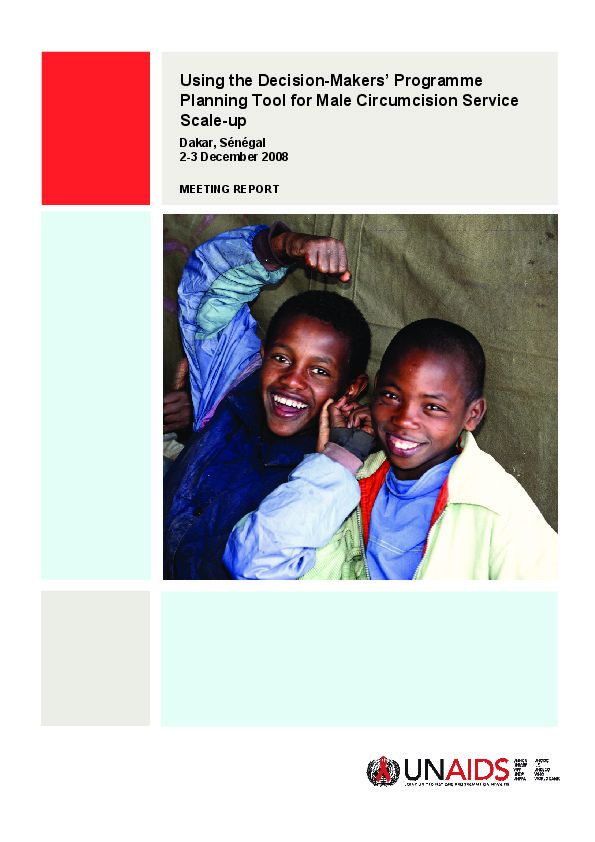Documents
Using the Decision-Makers’ Programme - Planning Tool for Male Circumcision Service - Scale-up - Dakar, Sénégal - 2-3 December 2008 - MEETING REPORT
20 de abril de 2009
There is compelling evidence that male circumcision reduces the risk of female-to-male transmission of HIV. UNAIDS and WHO recommend that countries with high HIV prevalence and low levels of male circumcision introduce or scale up safe male circumcision services as part of a comprehensive HIV prevention strategy.
Related
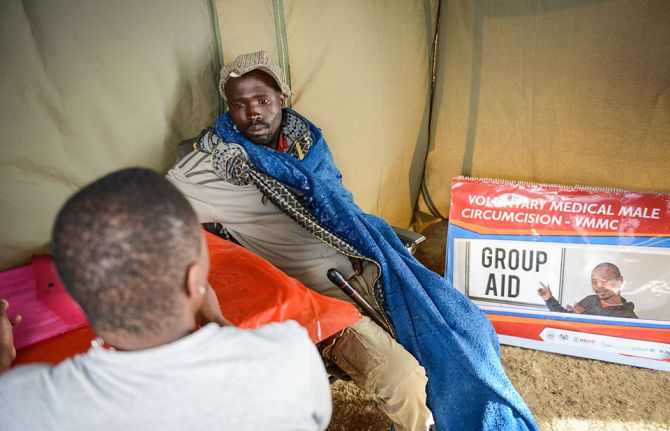 We are off track to meet the 2020 targets on the number of voluntary medical male circumcisions
We are off track to meet the 2020 targets on the number of voluntary medical male circumcisions

01 de febrero de 2021
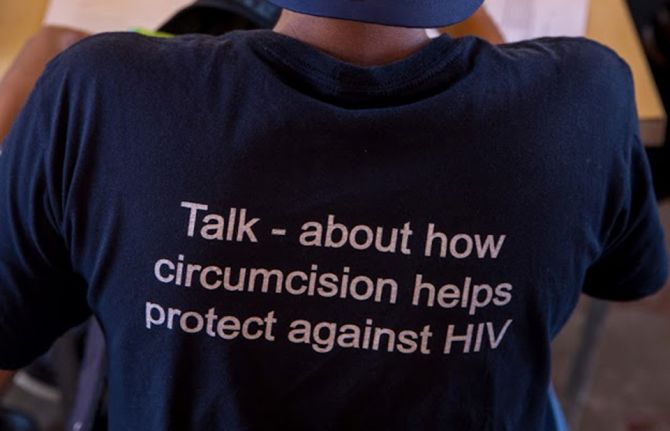 Voluntary medical male circumcision―4.1 million performed in 2018
Voluntary medical male circumcision―4.1 million performed in 2018
21 de octubre de 2019
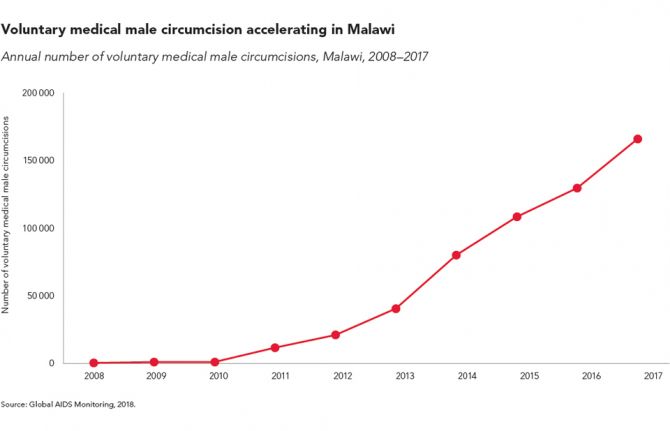 Voluntary medical male circumcision accelerating in Malawi
Voluntary medical male circumcision accelerating in Malawi

29 de mayo de 2019
Zero Discrimination Day 2019 - Act to change laws that discriminate
15 de febrero de 2019
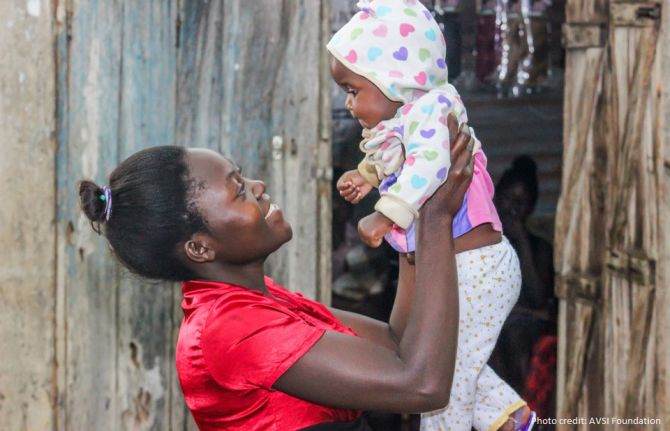 PEPFAR announces continued progress against HIV
PEPFAR announces continued progress against HIV

06 de diciembre de 2017
HIV Prevention 2020 Road Map — Accelerating HIV prevention to reduce new infections by 75%
10 de octubre de 2017
Confronting discrimination
02 de octubre de 2017
Agenda for zero discrimination in health-care settings
15 de febrero de 2017
 Protecting men and boys’ health in Swaziland
Protecting men and boys’ health in Swaziland

21 de octubre de 2016
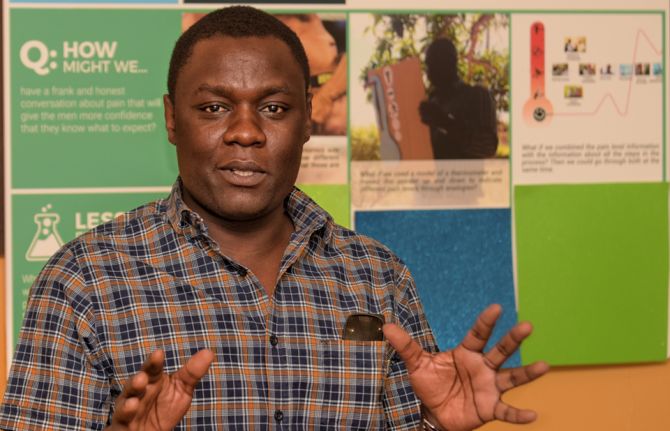 Using market research for long-term sustainability of VMMC in Zimbabwe and Zambia
Using market research for long-term sustainability of VMMC in Zimbabwe and Zambia

19 de octubre de 2016

